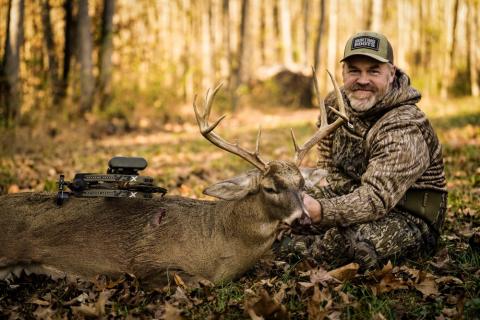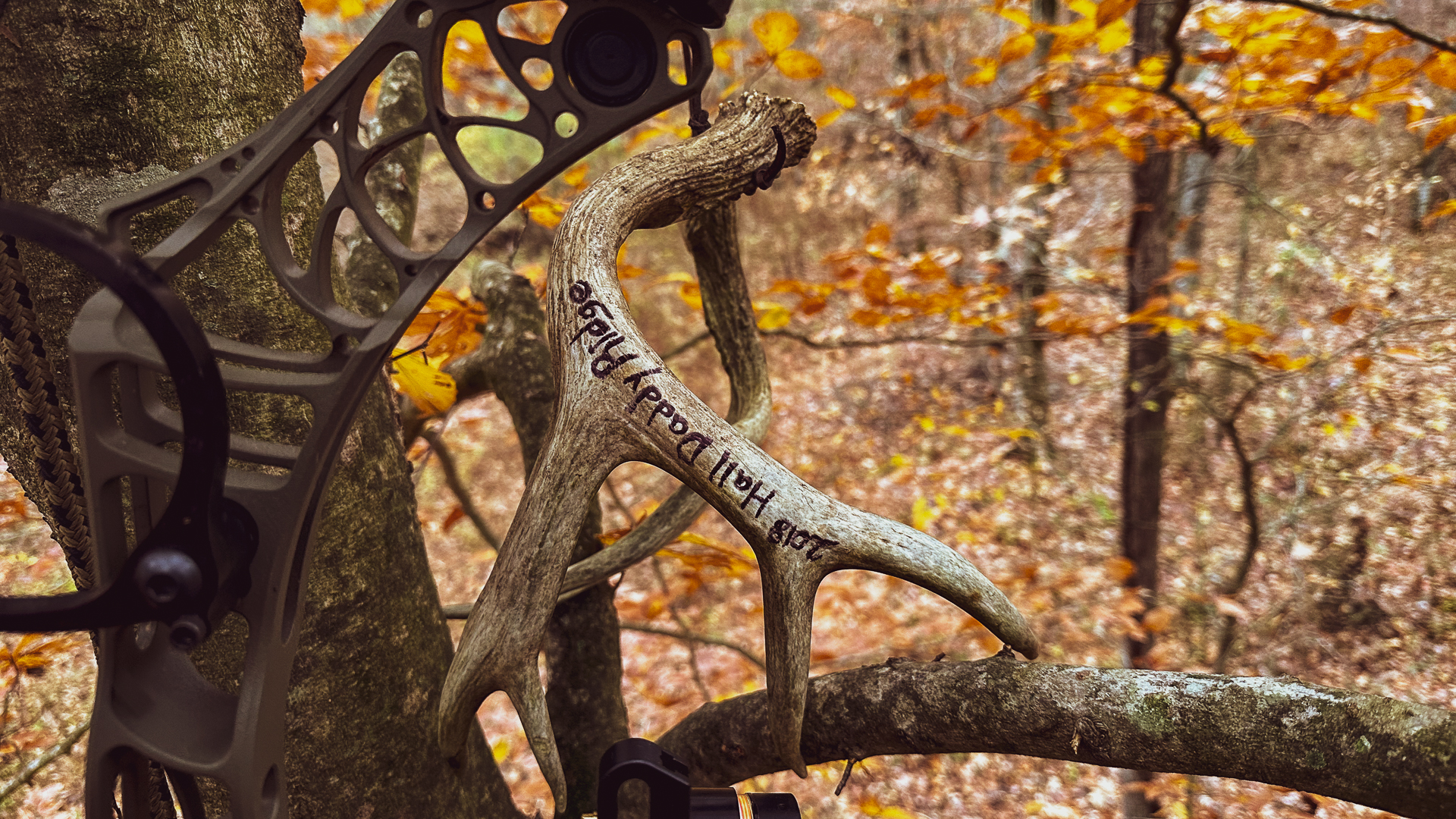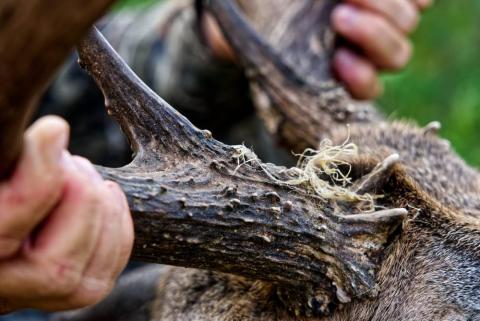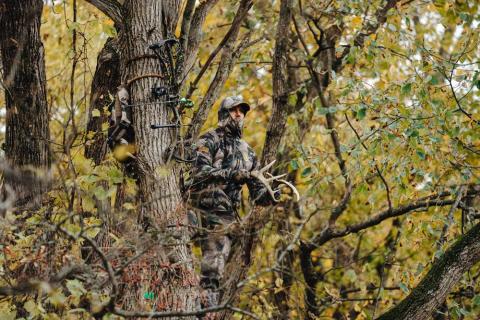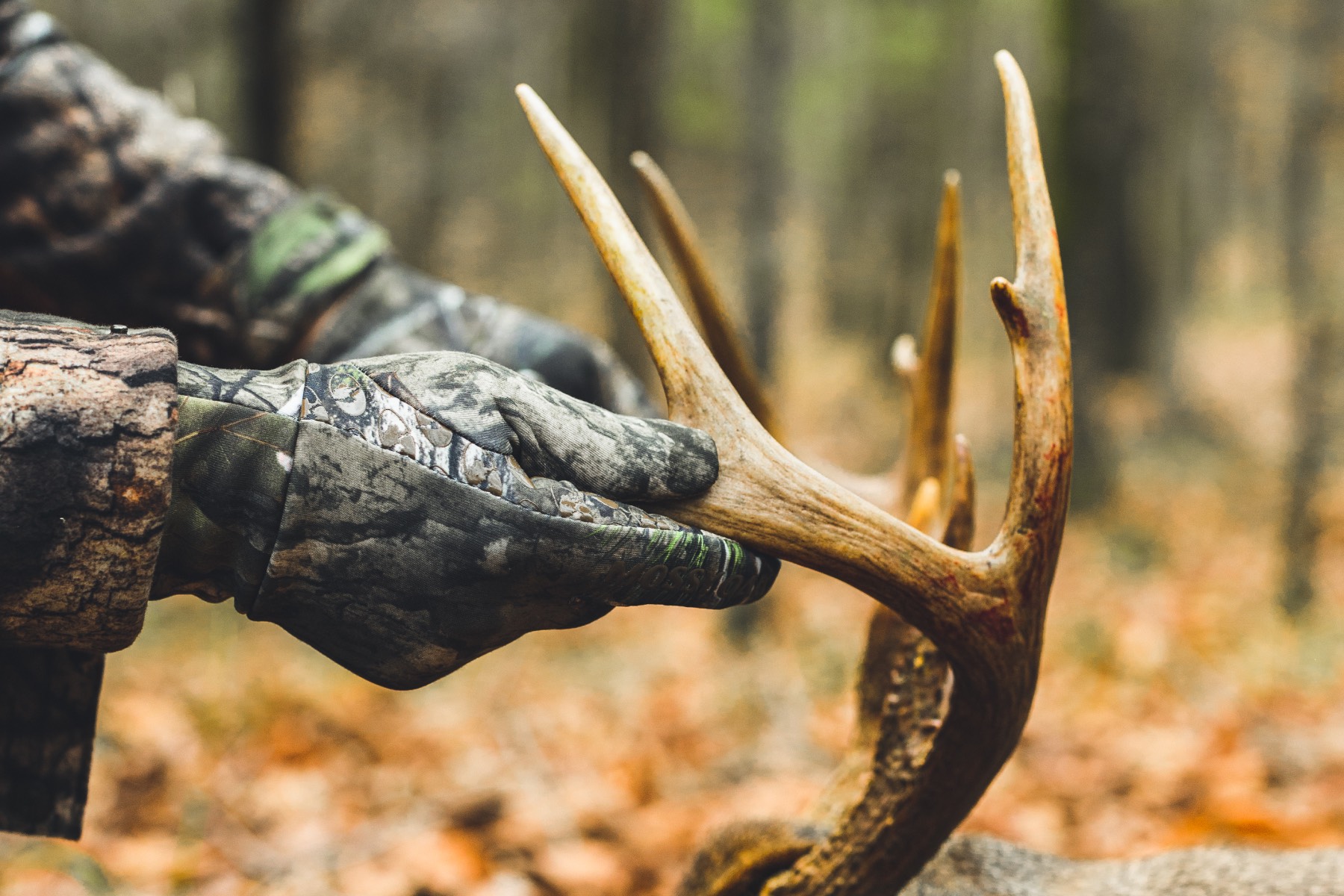
Heath Wood
As I slowly walked through the tall grass in the dark, I gritted my teeth at the noise I made as my boots crunched against the frost-covered ground.
Although I assumed I had spooked every nearby deer, I made my way up the climbing sticks that led to a hang-on stand. I attached my safety harness, then snuggled into my insulated jacket, like that of a turtle going back into its shell. The first cold snap of the year can be rough when you’re not accustomed to the colder temperatures. Until now, I had only participated in early-season evening hunts in warm weather. As I shivered from the chill in the air, I also shook with excitement, knowing that the fall hunting season was beginning to go full throttle from now until the rut in mid-November.
That first cold morning sit of the year did not disappoint. I witnessed several smaller bucks scraping at the edge of the timber and numerous bucks chasing around does, like young teenagers chasing girls to try and gain their attention. From first light until 9:30 a.m. I witnessed one of the most eventful sits in a tree I have ever experienced – one that showed me that it was time to start hunting in the mornings.
One of the most prominent debates amongst hunters is the best time to hunt during the early season. Many hunters strongly object to hunting during the morning because they risk spooking deer when walking to the stand and startling them from food sources, which ruins the rest of the morning hunt chances. If a mature buck is pushed away too often, it can cause him to leave the area for the rest of the season; thus, many hunters elect to hunt only during the evenings until the proper time arises.
The Best Day To Start Hunting Mornings
It would be nice to have it written in stone that a specific date is when you must start hunting mornings. However, we all know it is not that simple. For several years, I would become discouraged when I would hear veteran hunters say they would not start hunting until the middle of October. I could not comprehend how they could purposefully miss a month of deer hunting opportunities. Yet, over the years, I have realized their theory on waiting to hunt was not as irrational as I had once assumed.
When hunters say they will wait until mid-October before hunting, they usually base their decision on two factors. The number one factor is the excessive number of ticks and chiggers that can be acquired when grazing against brush and taller grasses. The other factor that plays into the timing of a mid-October hunt is trying to avoid spooking deer when walking to a stand in the early morning since they become more active through daylight during this period. Both elements are determined by cooler weather.
Another notion I have often heard from hunting old timers is that they do not hunt until the first frost. As time has progressed, I have encountered enough experiences to agree that deer hunting in the mornings should not be done until after the first frost.
When researching the average date of the first frost across the country, I was intrigued that the average date was nearly the same from eastern Colorado across to the Atlantic coast when looking east and west. Then, going north to south, it is around the same time frame from northern Iowa down to central Arkansas. In this large area of the United States, the first frost typically occurs from October 12th through October 16th. Hence, the middle of October is an accurate guess of when it is safe to start hunting in the mornings.
How To Know When To Hunt Mornings Without Looking At A Calendar
With hunters living in different regions across the United States and weather forecasts being different yearly, it is hard to set a specific time to begin morning hunts. As a rule of thumb, October 15th is the most common date to begin hunting. Yet, there are a few factors that hunters can look for when determining the date for each year. Factors I try to observe each year are when summer travel patterns switch to pre-rut patterns. The best way I have found to determine when bucks switch their daily patterns is with game cameras. Throughout the summer and until the first two weeks of October, bucks often travel together in what is often referred to as a bachelor group. When I notice all the bucks have split apart and gone their separate ways, I watch for their pre-rut behavior to begin. As with my hunt, the first morning or two that it has frosted and temperatures drop down into the mid-30s or low 40s, younger bucks often begin scrapping, sparing between each other, and chasing does around prematurely. This typically happens when it gets cool enough to frost in the mornings, characteristically during mid-October. Cold fronts or a sudden change in weather can be the number one indicator to start hunting in the mornings when trying to find a mature buck on his feet during daylight hours.
What if you can only hunt in the mornings due to work or other obligations that limit your time? Should you still wait until late October? No way! I never want to recommend refraining from hunting because I know first-hand what it is like to have a limited window of hunting opportunities. If mornings are the only time to hunt, avoid hunting close to bedding areas early and find the best entrance and exit route that is the least likely to bump any deer when going to the stand. Also, perform every step in a scent control regimen to increase the chances of staying undetected by mature bucks. If they do not see or smell you when hunting or walking to and from the stand, it decreases the odds of spooking them when hunting mornings, no matter what time of the year.
















